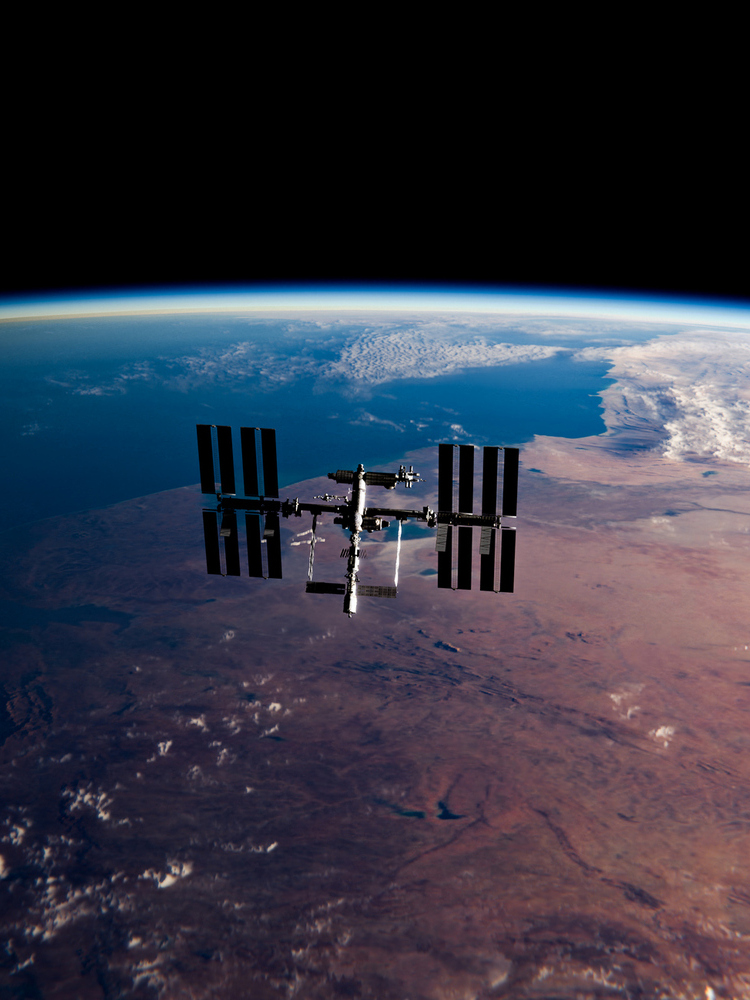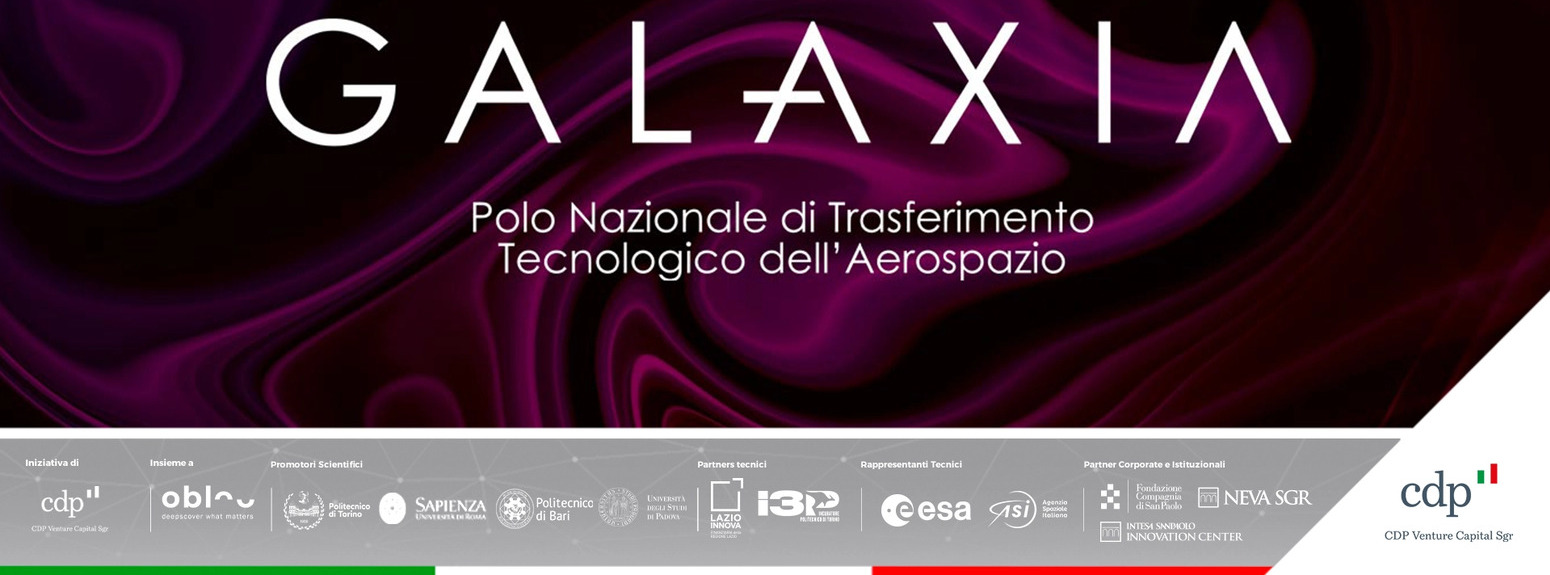Space Economy, a horizon of innovation and opportunities for businesses
In Italy, the space economy plays a crucial role in technological and economic development, confirmed also by the investment of €2.5 million by Neva SRG and Fondazione Compagnia di San Paolo in Galaxia: the National Technology Transfer Center for Aerospace, supported by Intesa Sanpaolo Innovation Center.
Space has always represented a horizon to explore for humanity, an endless territory rich in opportunities and mysteries. Today, thanks to technological evolution and the growing involvement of private actors, space is no longer exclusively the domain of large government agencies but rather a dynamic market in rapid expansion: the Space Economy, that is, the economy of space and the aerospace industry.
What is the Space Economy
The Space Economy is defined by the OECD (Organisation for Economic Co-operation and Development) as the entire range of activities and the use of resources that generate value and benefits for humanity through exploration, research, understanding, management, and use of space.
This deliberately broad definition is not limited to the production of satellites, but includes two different perspectives: on one hand, access to and exploration of space, whose activities (such as space tourism, colonization, and mining resources from asteroids) will have significant impacts that can only materialize in the long term; on the other hand, the economic use of data and information from space to generate added value, considering it as an asset with tangible impacts observable in the short and medium term.


Applications of the Space Economy: upstream and downstream
The applications of the Space Economy are conventionally divided into two segments:
- Upstream: includes the design, construction, and launch of space infrastructures (satellites, rockets, space stations, suborbital vehicles, telemetry instruments, and technologies for control centers). This segment represents the technological and engineering core of the Space Economy, where major agencies such as NASA and ESA (European Space Agency), innovative startups, and private companies operate.
- Downstream: concerns the use of data and services derived from space applications (remote sensing technologies for Earth observation, environmental monitoring, satellite communication technologies, and integrated applications of satellite navigation systems, such as GPS navigation based on geostationary satellites).
The current definition of the Space Economy
With a focus on the present, the Space Economy can therefore be defined as the value chain that, starting from research, development, and the realization of enabling space infrastructures (upstream), generates products and innovative service models based on space (downstream), capable of responding to known and emerging needs of public and private organizations in various sectors.
Technology Transfer Between Space and Earth and New Cross-Sector Services
In addition to these two segments, there is the technology transfer from space to Earth (spin-in) and from Earth to Space (spin-out), as well as new types of cross-sector services enabled by data from space infrastructures, including: precision agriculture, telemedicine, energy system control, support for transportation and urban mobility systems, ecosystem monitoring, and supply chain monitoring, which is crucial for sustainability.
The global market value of the Space Economy
Estimates by Space Foundation show that the global market reached a value of $570 billion in 2023, with a growth of 7.4% compared to the previous year. This is in line with the five-year CAGR of 7.3%, which will bring the market to exceed €800 billion by 2030, thanks especially to the momentum of solutions in the telecommunications and satellite navigation sectors.
Technologies in the Space Economy
From a technological perspective, the X-Plore SpaceTech Report, produced by Intesa Sanpaolo Innovation Center in collaboration with Fondazione LINKS, analyzes the six typically space-related application domains: from the strategic sector of access to space to human and robotic exploration, from satellite technologies to their applications for telecommunication services, up to navigation and Earth observation.
Among the main technologies of the Space Economy are, for example:
- Artificial Intelligence: increasingly fundamental for the analysis and interpretation of satellite data, as well as for the optimization of launch operations and for the autonomous management of space missions.
- Launchers: rockets that deliver satellites and useful payloads into orbit with reusable innovations to reduce costs.
- Robotics and automation: crucial for in-orbit maintenance, repair operations, and support for long-term missions, such as those to Mars.
- Satellite technologies: used for a wide range of applications, both in the commercial and scientific sectors, for global satellite communications, for navigation, and for Earth observation, in addition to playing a crucial role in space missions and supporting security.
- Space mining: extraction of materials from planets or asteroids through innovative solutions.
- Innovative materials and nanotechnologies: contribute to the production of components that are more durable, lightweight, and efficient, improving the performance of space vehicles and infrastructures.
- Manufacturing for space colonization: an area that may seem science-fictional, but with concrete applications for the many companies working on structures to inhabit new planets.
These cutting-edge technologies not only enhance the operational capabilities of the Space Economy but also represent an important field of research and development, where universities, research centers, and industry collaborate. The adoption of such solutions fosters innovation, reduces operational costs, and paves the way for new commercial and industrial applications, creating synergies between the space sector and other terrestrial technological sectors.


The importance of space logistics
Space logistics plays a strategic role in the Space Economy. According to Zion Market Research, the global market in this sector was valued at $5.1 billion in 2023 and is expected to grow to $21.1 billion by 2031.
The X-Plore Space Logistics Report, produced by Intesa Sanpaolo Innovation Center in collaboration with Fondazione LINKS and Thales Alenia Space Italia, explains how space logistics will become a pillar of sustainable growth, transforming space into a dynamic extension of the terrestrial economy. In fact, it will see the implementation of a value chain that enables the management of space assets, both public and private, the transfer of goods and materials between Earth and space, and the long-term presence of human assets in orbiting bases or located on celestial bodies.
At a strategic level, space logistics envisages the construction of a scalable ecosystem capable of minimizing waste, optimizing resource usage, and promoting circular systems, both thanks to services and products produced in space in laboratories characterized by the absence of gravity, and by ensuring the survival of human beings for long periods in space by enabling, for example, the conquest of the Moon and subsequently that of Mars: projects that catalyze the interest of various countries.
Opportunities for the development of the private sector
The main drivers identified by the OECD for the development of the private sector in the aerospace industry include:
- Diversification of investments: the reduction of risks thanks to small-sized and cost-effective satellites, combined with the use of reusable launch vehicles.
- Development of new services: the use of satellite data to create innovative solutions in emergency management and environmental monitoring.
- Promotion of innovation: startups and innovative companies are attracting private investments through spin-offs, partnerships, and dedicated funding rounds to finance their roadmaps.
- Evolution of business models: companies are adopting commercial models that involve upfront investments in development and intellectual property, accompanied by strategic changes in governance.
- Market growth: with projections indicating a potential of $1.8 trillion by 2035, the sector attracts the interest of publicly traded funds that include companies linked to the Space Economy in their portfolios.
Challenges and obstacles
Despite the many opportunities, the sector must face some difficulties:
- High entry costs and operational risks: space technologies require significant investments.
- Limited access to funding: particularly in the expansion phases, exacerbated by the lack of investors with specific expertise.
- Market maturity: some uncertainties persist regarding the stability and maturity of the sector.
- Fragmentation of the support ecosystem: financing and innovation tools are not always aligned with the needs of businesses.
- Limited exit opportunities: the absence of consolidated pathways for investment returns can discourage private investments.
- Regulatory barriers: jurisdictional constraints and complex regulations increase uncertainty and operational costs.
Global and european perspectives for the Space Economy
At a global level, the new space race sees the United States and China competing in the realization of public and private infrastructures in low Earth orbit (LEO) and in the colonization of the Moon. While government projects are oriented towards research, exploration, and military applications, the role of private actors exploiting commercial opportunities is growing.
In Europe, the conflict between Russia and Ukraine has accelerated the development of spaceports in several countries, with the aim of enabling efficient management of launch volumes given the impossibility of accessing the Soviet aircraft. In this context, the REACTS – Responsive European Architecture for Space program involves 35 European organizations and aims to create a network of satellite launch systems, ensuring the data transmission starts within 72 hours from the onset of a potential crisis.


Italy’s Role in the Space Economy
Italy boasts a long tradition in the aerospace sector, which began with the launch of the San Marco 1 satellite in 1964, making the country the third nation in the world to reach space after the Soviet Union (with the artificial satellite Sputnik 1 in 1957) and the United States (in 1958, launching the Endevior satellite).
With the establishment of the Italian Space Agency (ASI) in 1988, Italy consolidated its role in international and European missions, becoming today the fifth country in the world and the second in Europe in terms of investments in the Space Economy relative to GDP, and the third contributor to ESA after France and Germany.
The Italian ecosystem includes over 500 active companies in this sector, mainly small and medium-sized enterprises, and the Earth observation segment recorded a 28% growth in 2024, reaching a total value of €290 million. However, long-term sustainability requires strengthening private demand, to be integrated with public investments such as those of the PNRR (€1.39 billion) and an additional €800 million from the Complementary Fund for satellite technologies and the space economy, part of the broader Space Economy Strategic Plan which provides funding for the national space ecosystem of over €7 billion during the 2023-2027 period.
The importance of the collaboration between private and pubblic
dustrial level, companies such as Leonardo – leader in the aerospace and defense sector partecipated by italian State - drive innovation. Leonardo, for example, has announced plans to launch a constellation of about 40 satellites by 2028, with an estimated investment of around €1.35 billion, for both military and civilian applications.
Public-private collaboration is equally essential, as demonstrated, for example, by Thales Alenia Space, which in January 2025 secured a contract worth €862 million from ESA to develop the Argonaut vehicle, intended to transport payloads of up to 1.5 tons to the Moon by 2031.
2024 marked important steps forward for the Italian industrial ecosystem, with initiatives such as the Axiom 3 mission, which saw Italian companies participating for the first time in commercial missions to the International Space Station (ISS), and the Space Factory 4.0 program, aimed at creating an integrated network of satellite factories and transforming the supply chain into a servitization model.
Italian Startups in the Space Economy
In 2024, the collection of investments for startups in the sector reached €170 million, driven by the type-C round of €150 million of the startup active in space logistics D-Orbit, in which took part Neva SRG: the Venture Capital firm of the Intesa Sanpaolo Group, controlled by Intesa Sanpaolo Innovation Center.
Although startup investments in the Space Economy are concentrated in rounds averaging €1.58 million, this represents a solid basis for stimulating innovation and fostering the development of new technologies and market solutions given a less pronounced gap with the main innovation ecosystems compared to other technological fields.


The investment by Neva SRG and Fondazione Compagnia di San Paolo in Galaxia
Neva SRG, through its SEI Fund (Innovation Ecosystem Development), and Fondazione Compagnia di San Paolo announced on April 7, 2025 an investment of €2.5 million in Galaxia: the National Technology Transfer Center for Aerospace.
Launched by CDP Venture Capital SGR and Obloo in 2023 to give a concrete boost to the development of startups emerging from research laboratories specialized in the aerospace sector, Galaxia includes the participation of important Italian universities such as the Politecnico di Torino and Università La Sapienza di Roma as scientific promoters, also involving the European Space Agency and the Italian Space Agency as Technical Advisors.
Thanks to this investment, Galaxia, which has the specific objective of investing in various areas of aerospace (upstream, downstream, spin-in, spin-out, and enabling technologies), has completed its fund raising reaching €30 million.
The partnership between Intesa Sanpaolo Innovation Center and Galaxia
Galaxia has so far carried out 16 PoC investments (Proof of Concept) and 16 seed investments for a total of about €18 million. Intesa Sanpaolo Innovation Center participates in the initiative as a partner, providing expertise, resources, and network support for the identification and growth of innovative companies, granting them access to its own network of relationships, as well as sharing analyses and studies produced, and connecting them with the clients of the Intesa Sanpaolo Group active in the aerospace sector.
Turin’s Positioning in the Global Aerospace Ecosystem
Turin confirms itself as a world-class and European aerospace hub, with over 160 active companies and a significant workforce of more than 12,300 people. The city hosts numerous institutional initiatives, conferences, projects funded within the PNRR, startup acceleration programs in the sector, and the ESA BIC (Business Incubation Center) Turi, managed by I3P and part of the network of incubators of the European Space Agency.
In this context, in November 2021, a five-year partnership agreement was signed between Intesa Sanpaolo and I3P, aimed at promoting innovation in the aerospace sector and supporting the growth of companies in the New Space Economy incubated in ESA BIC.
The Up2Stars Acceleration Program for Aerospace Startups
An additional engine for Italian innovation is represented by the Up2Stars program, an initiative for the acceleration and valorization of high-potential startups, carried out by Intesa Sanpaolo in collaboration with Intesa Sanpaolo Innovation Center and supported by the Gellify innovation platform.
Through the Aerospace vertical, Up2Stars has selected and supported the growth of ten startups active in the Space Industry, offering them mentorship, access to capital, strategic connections, and support for business development.
